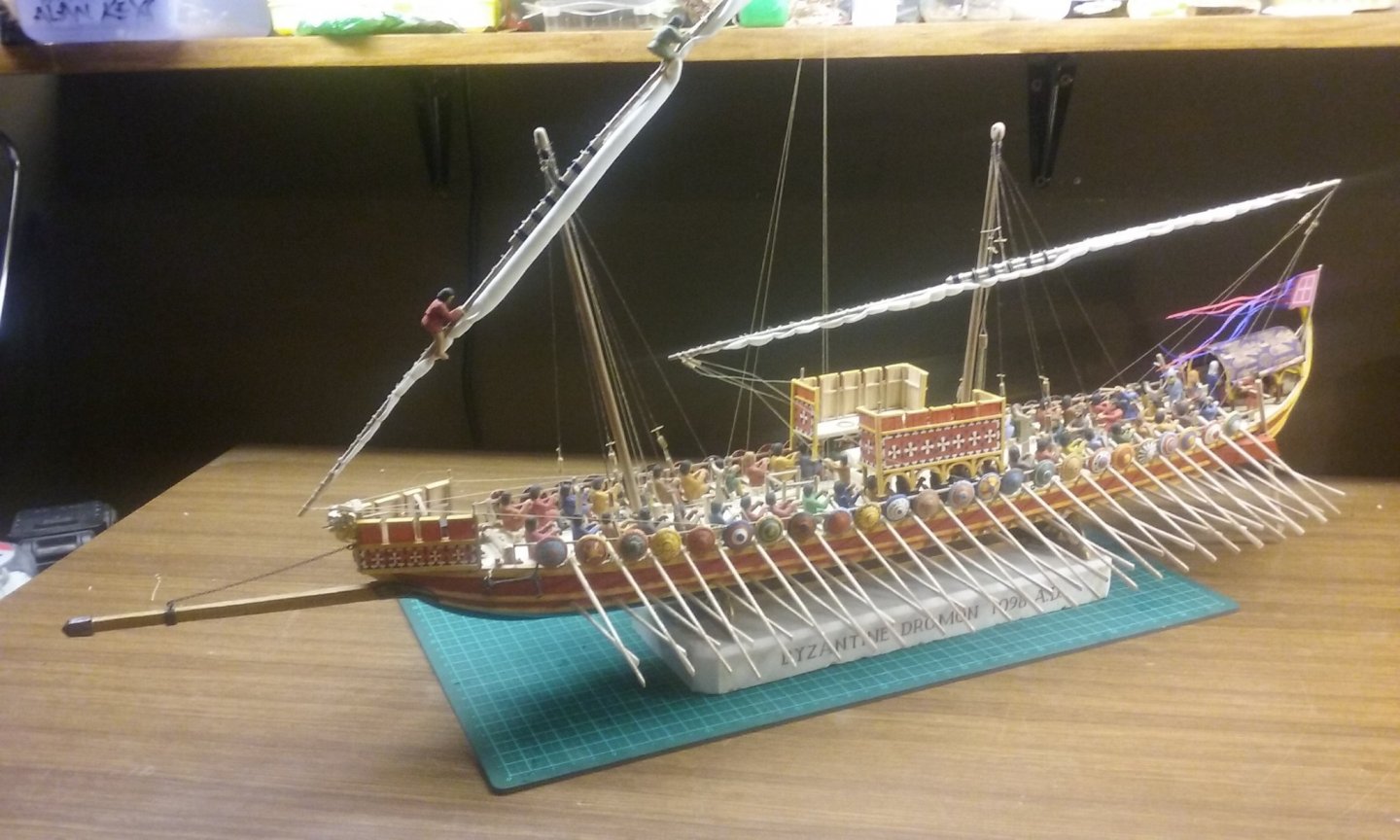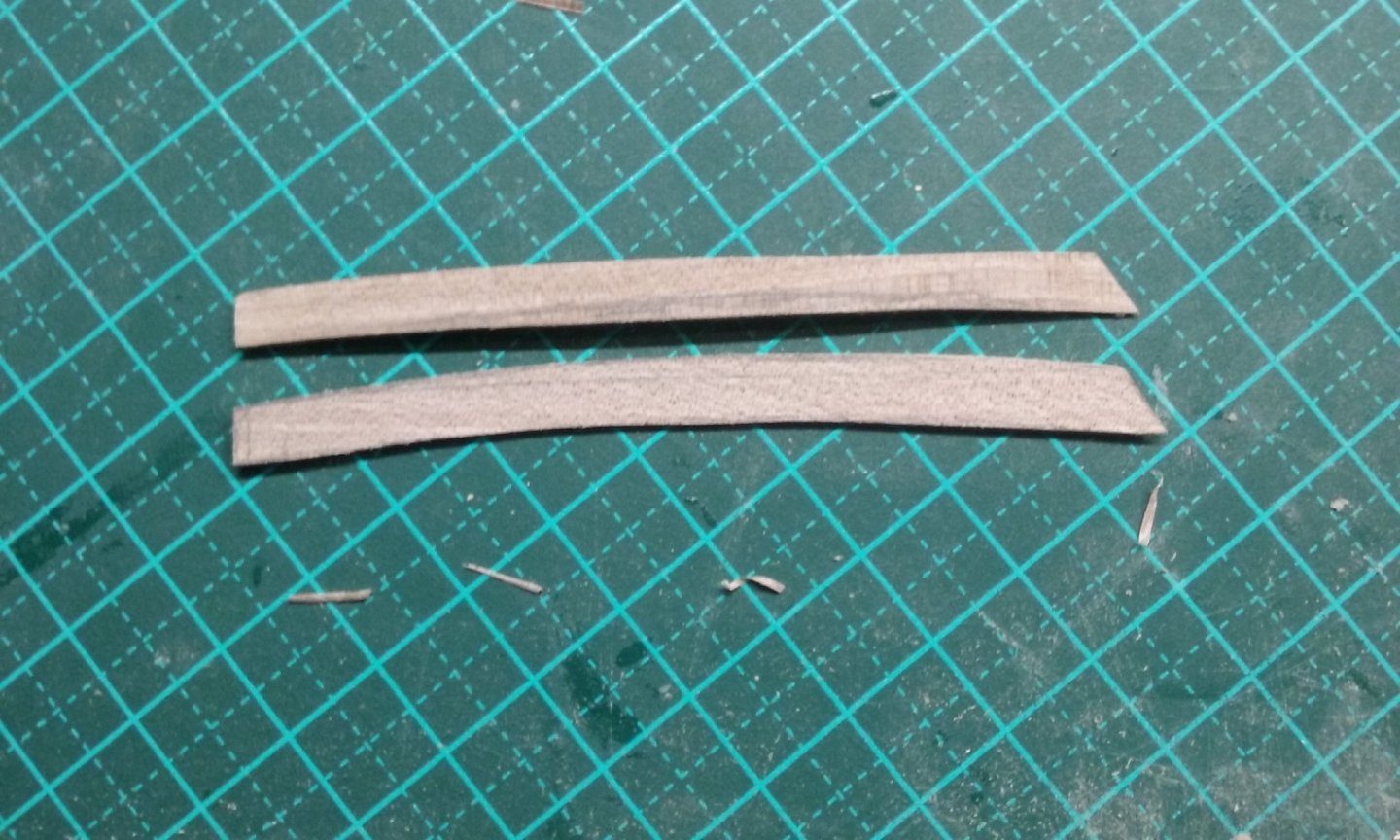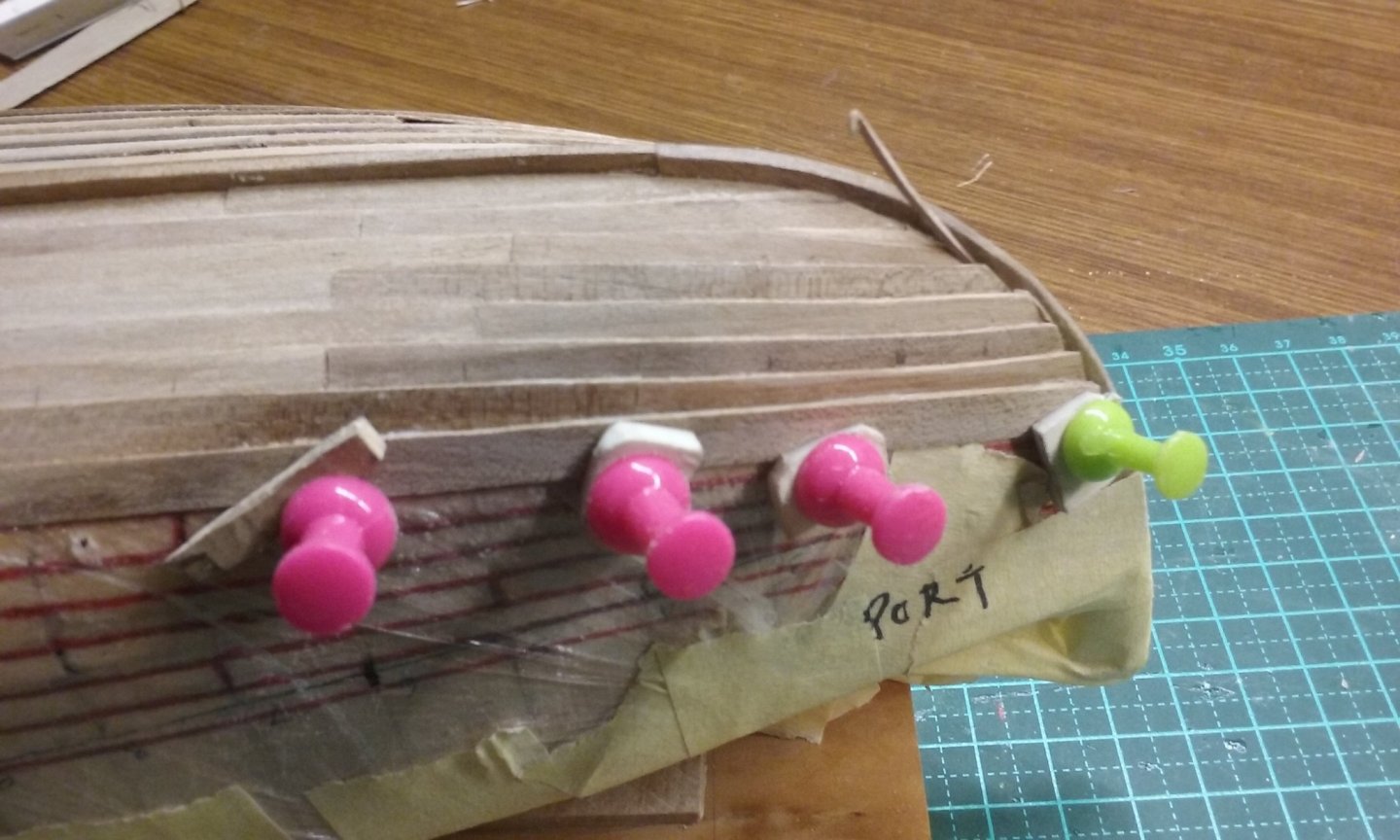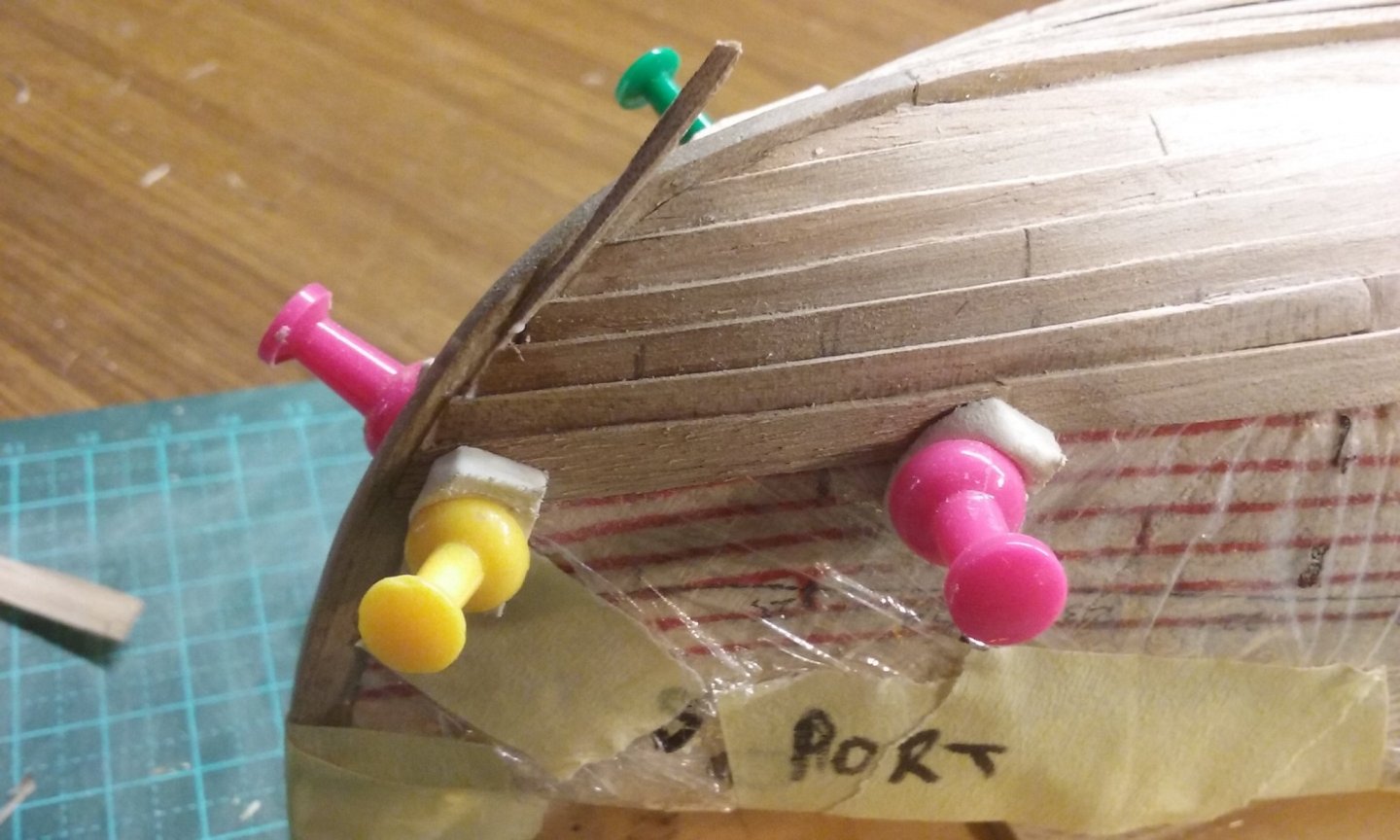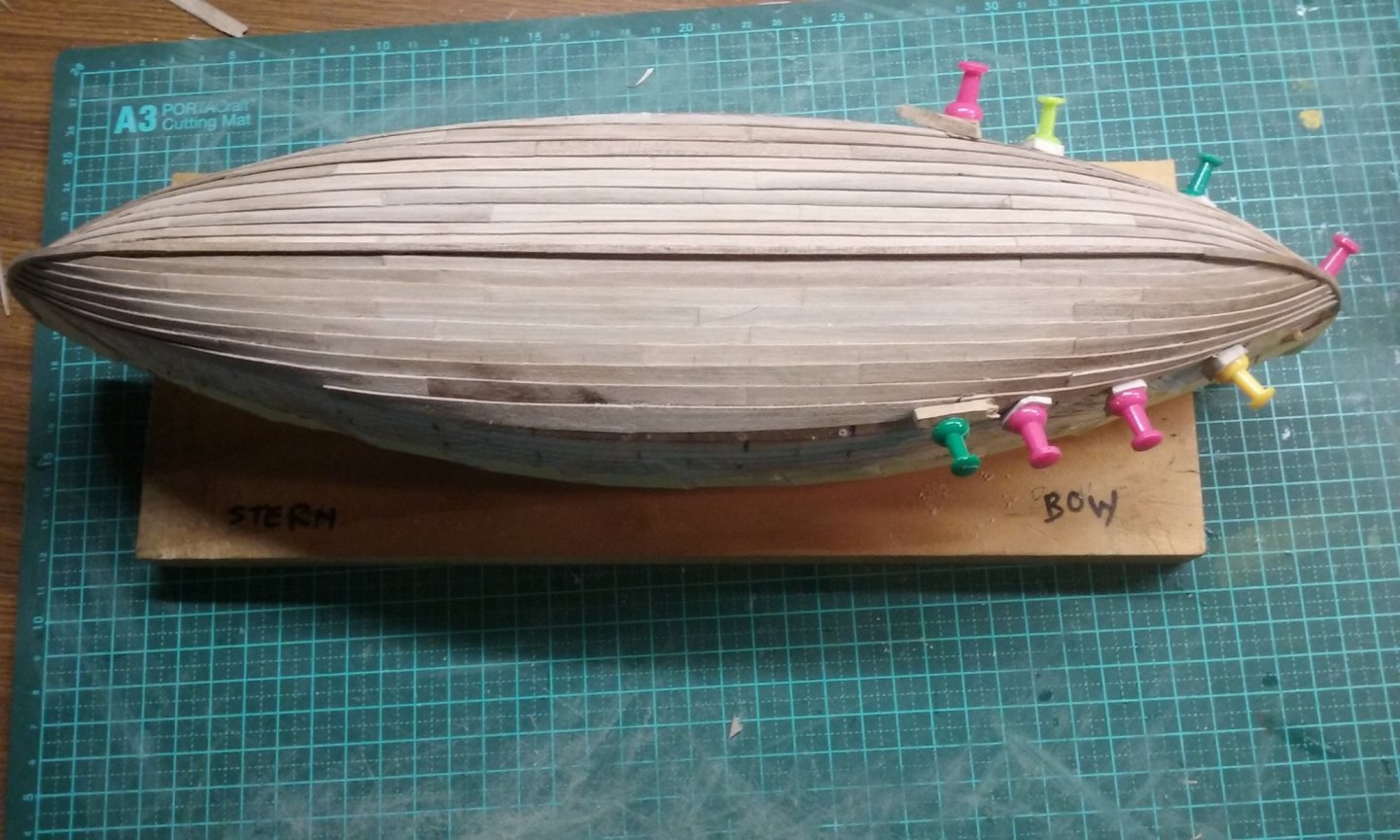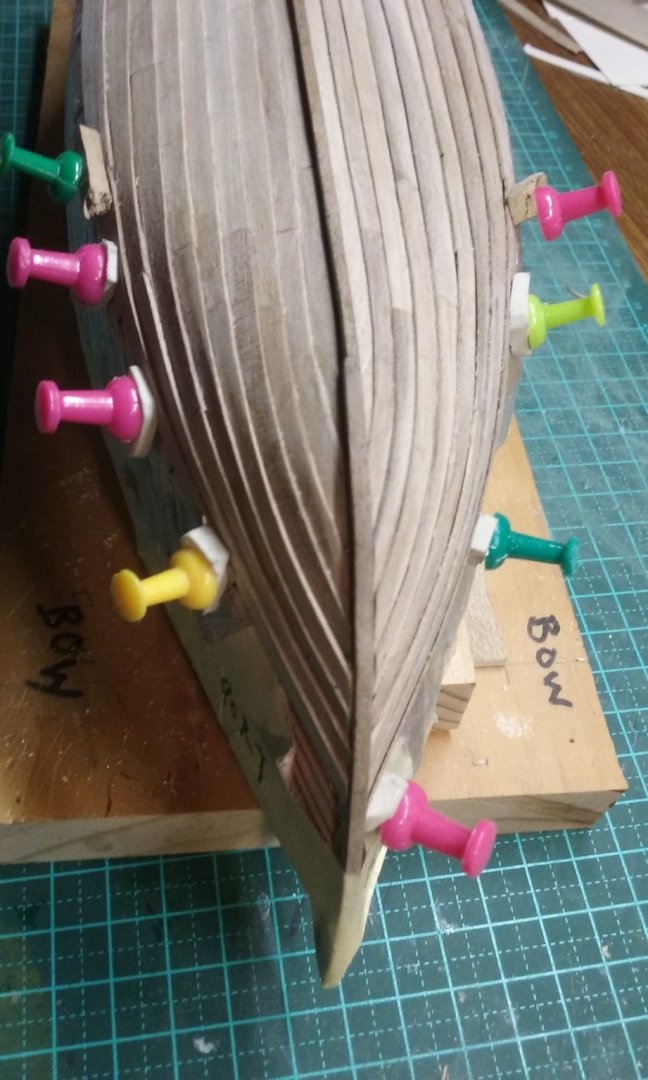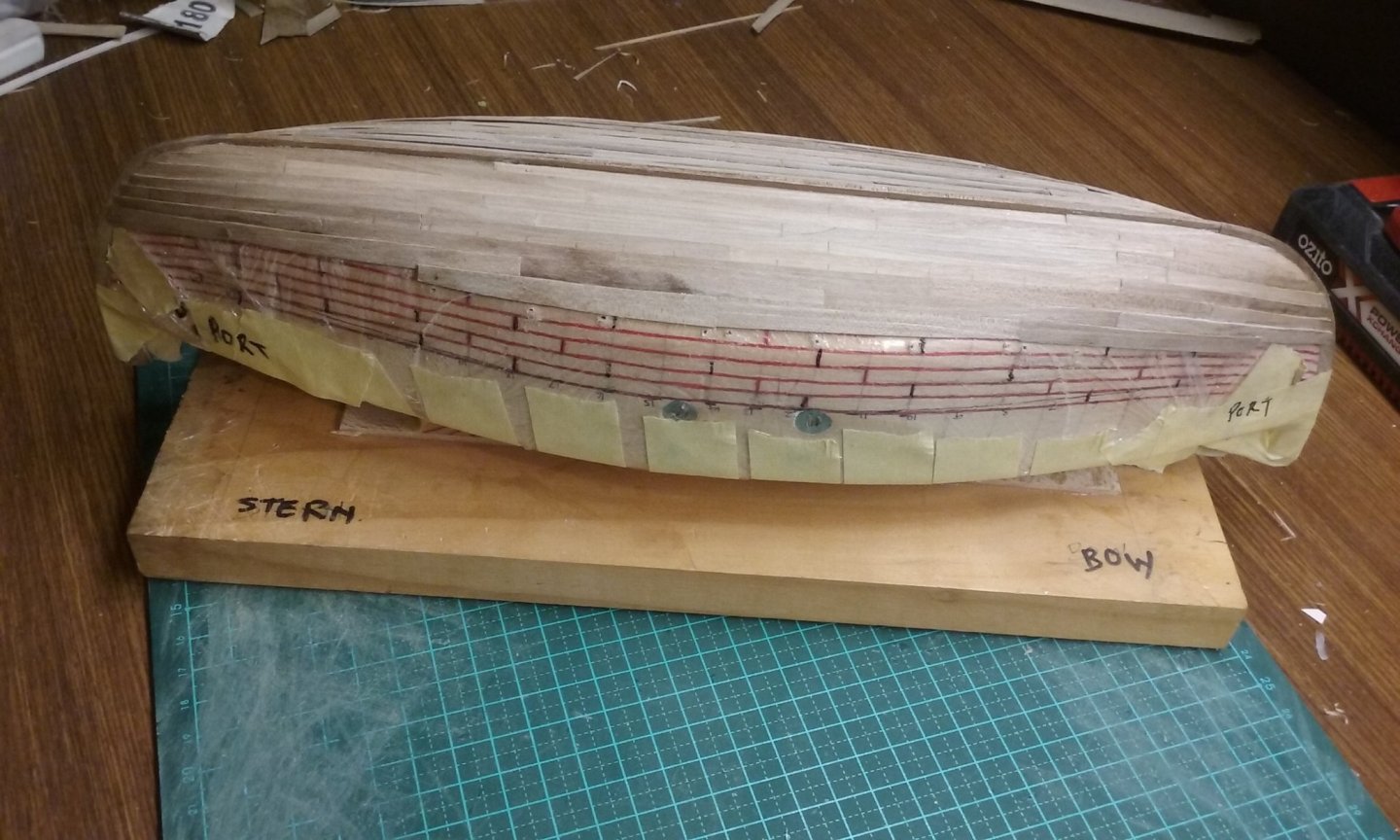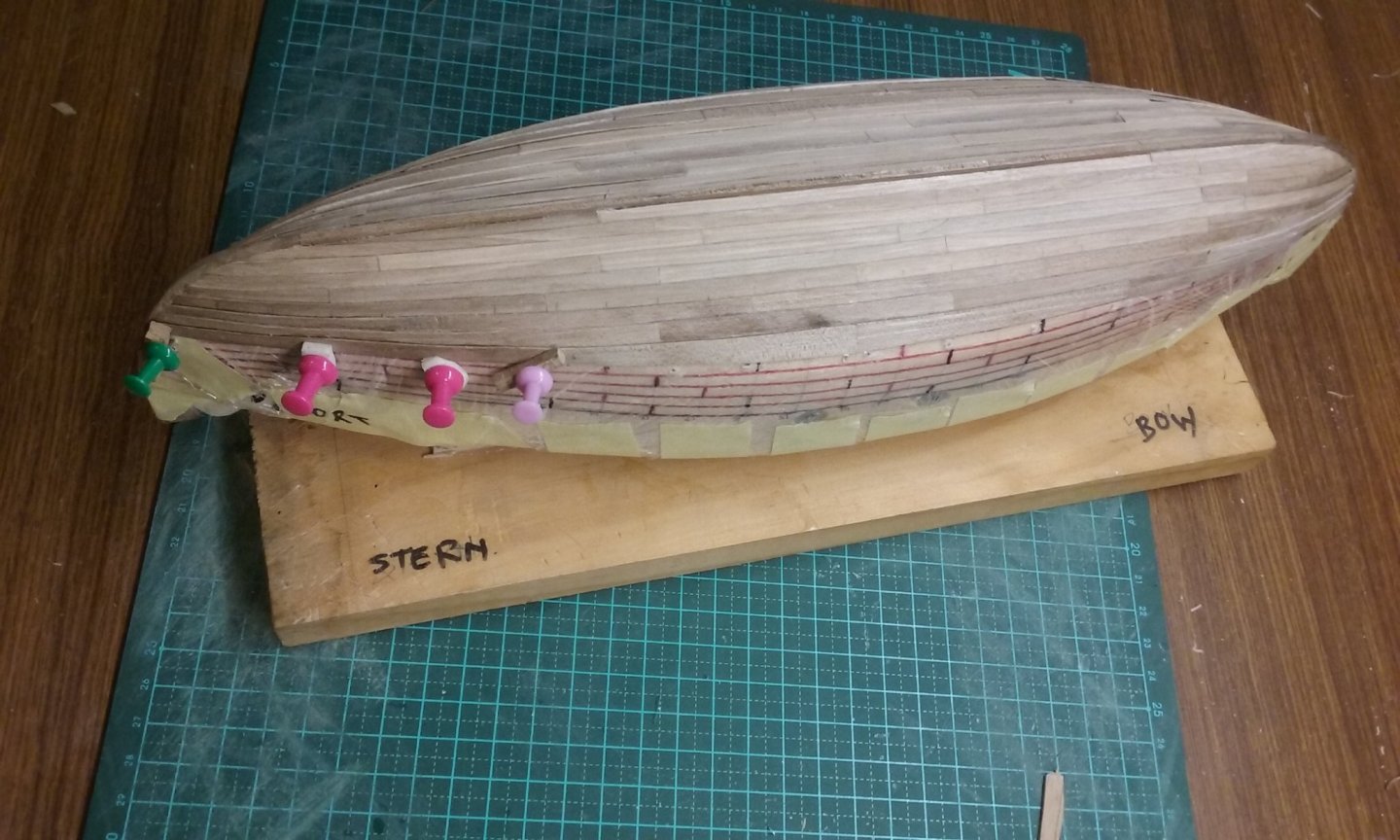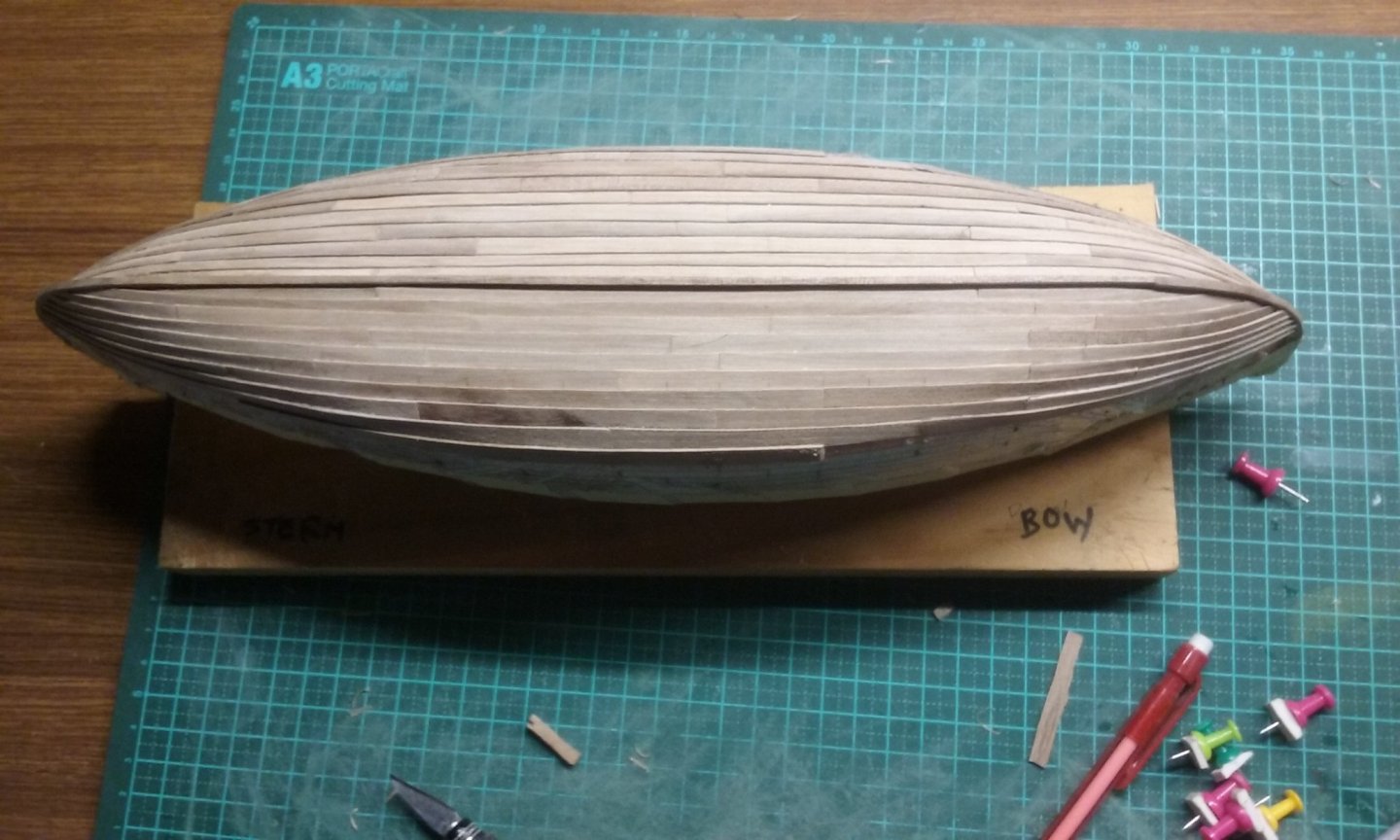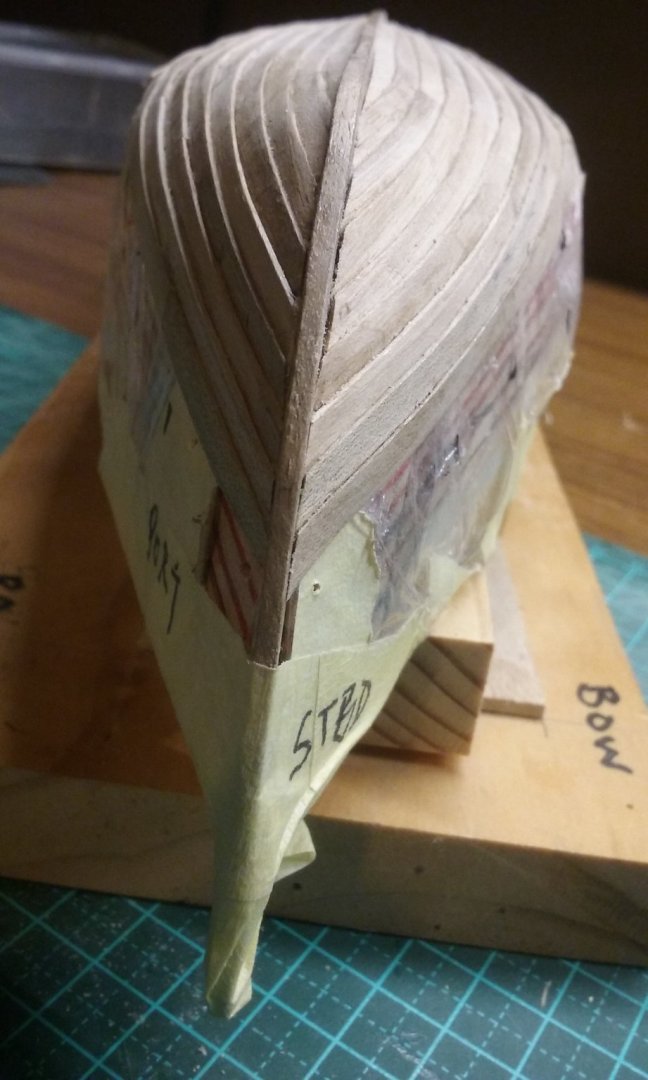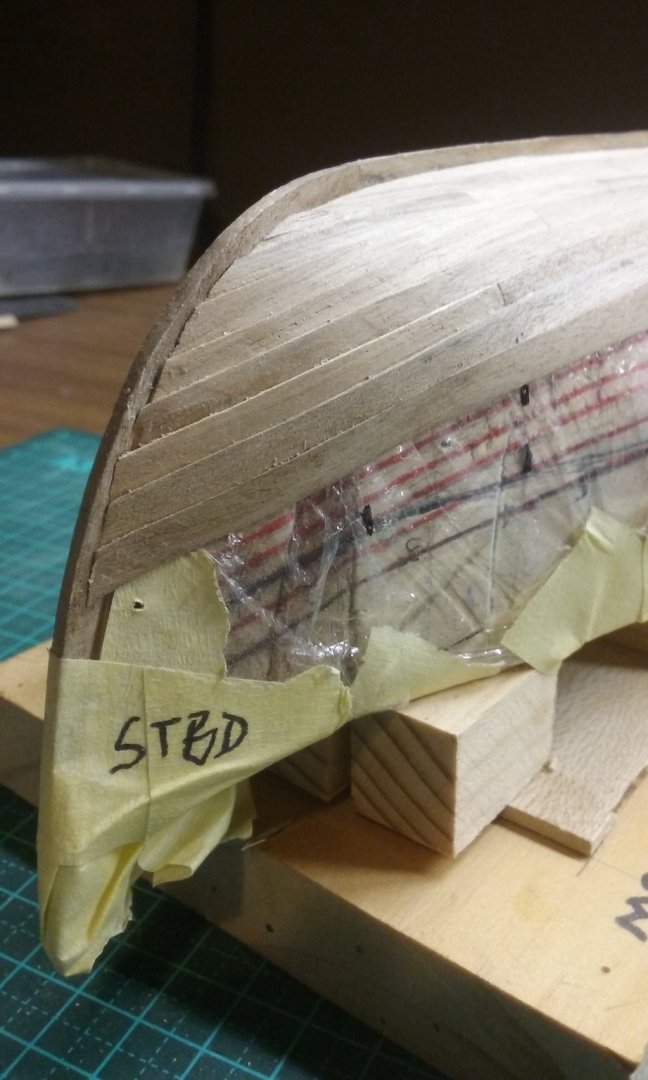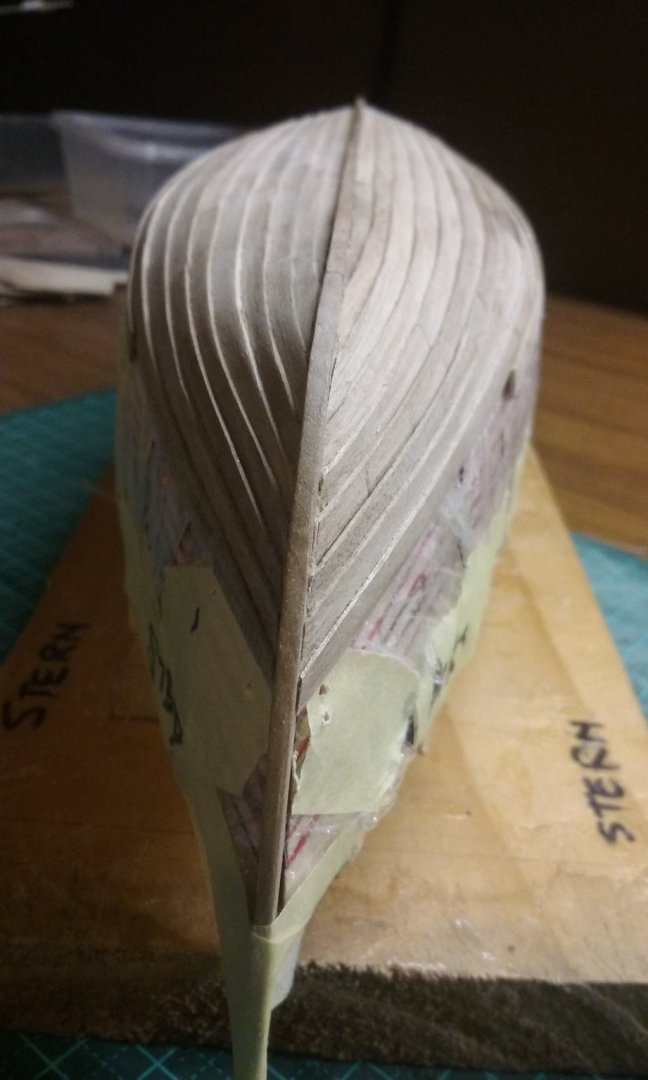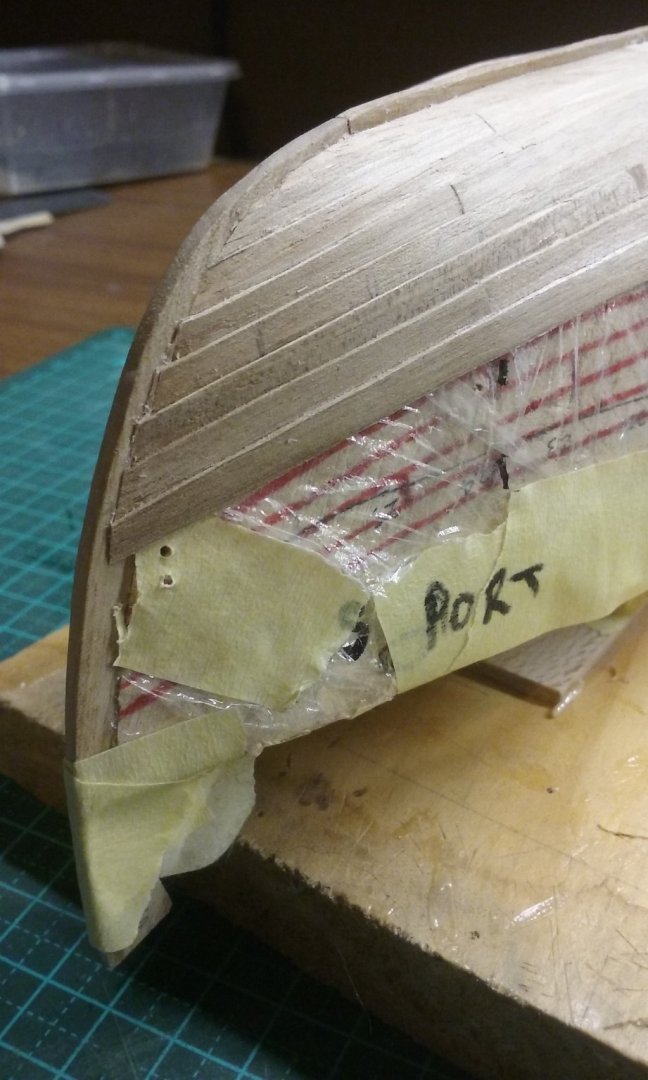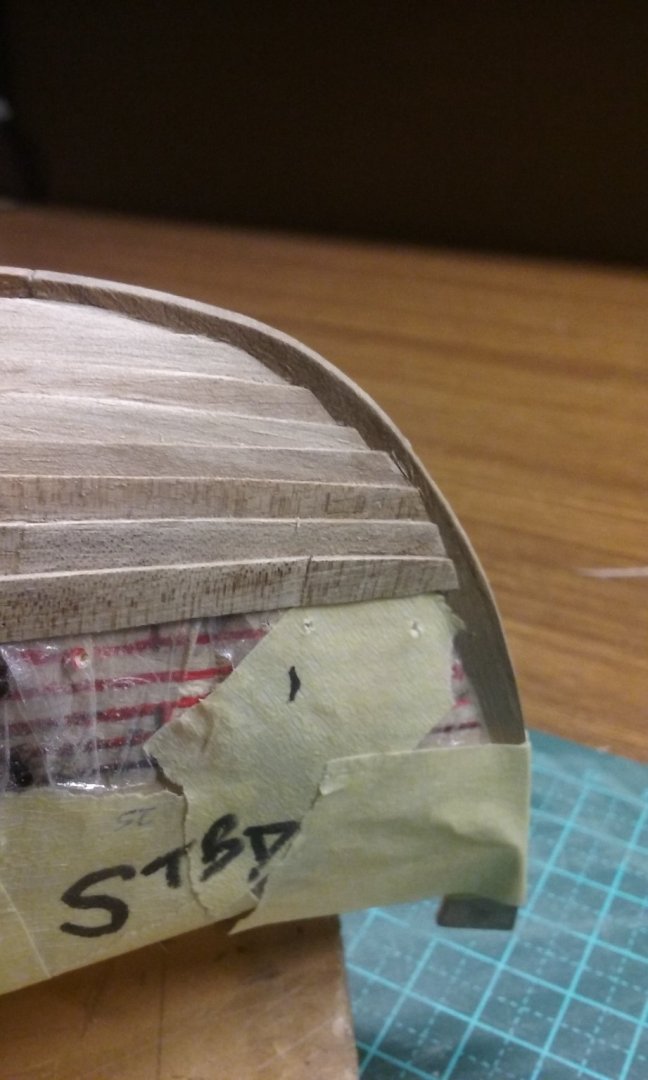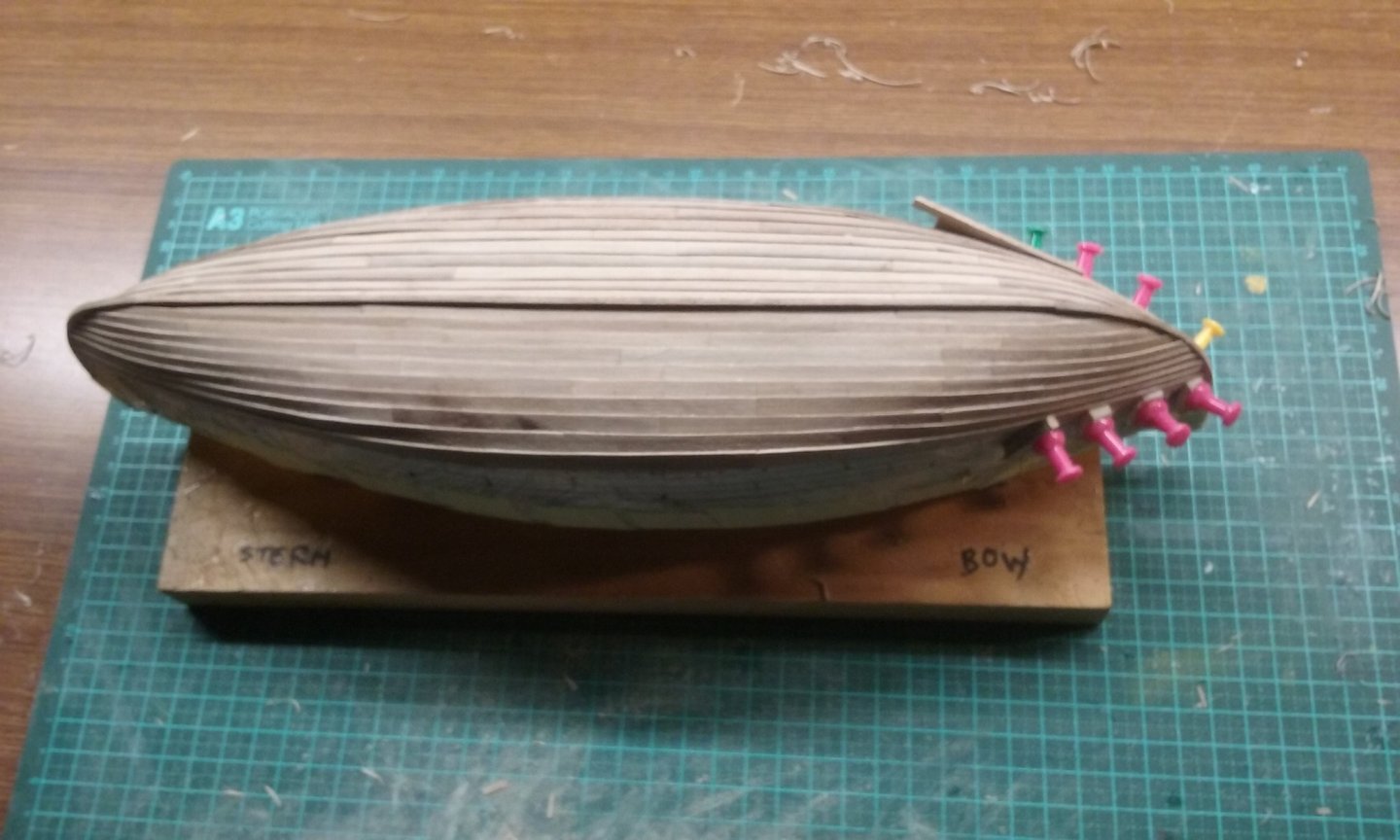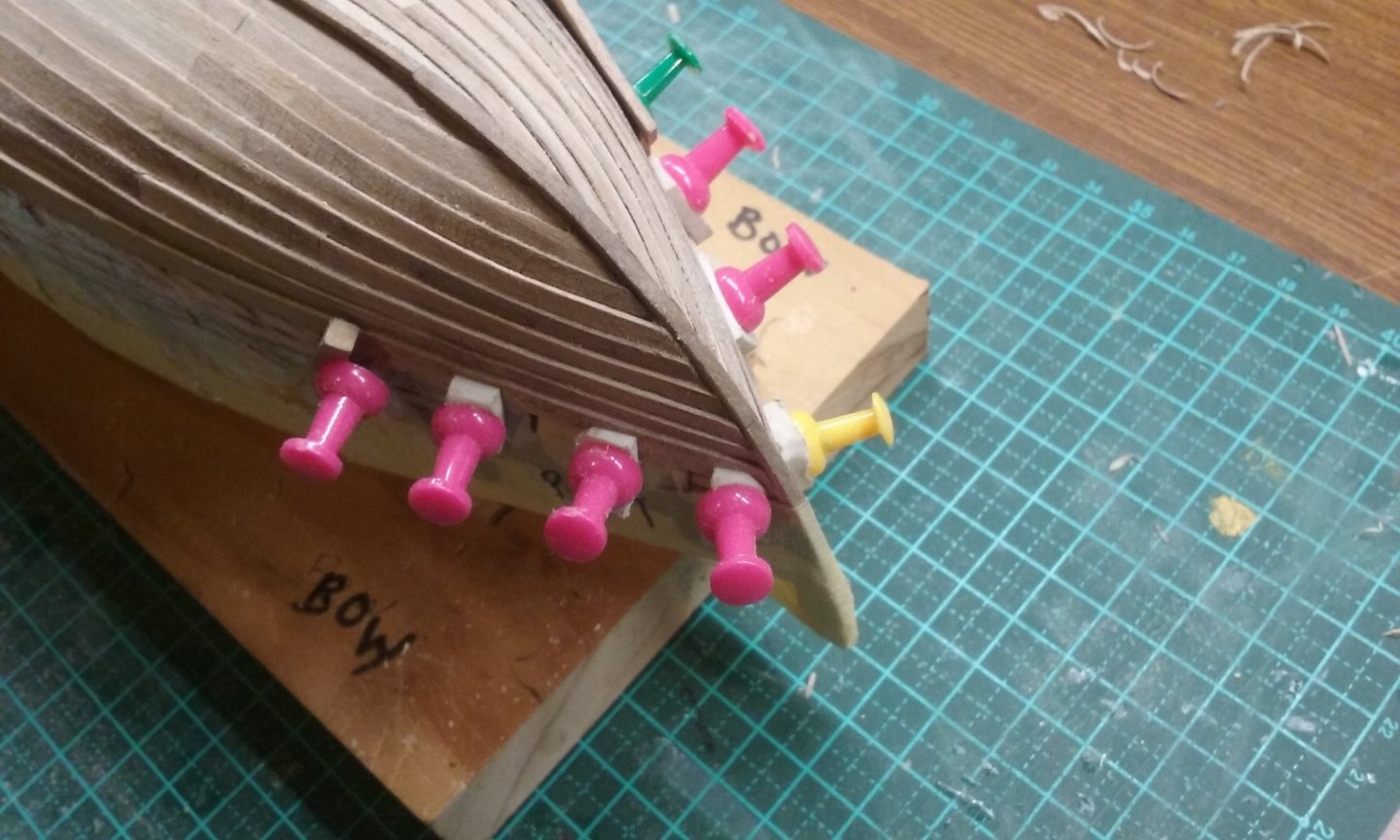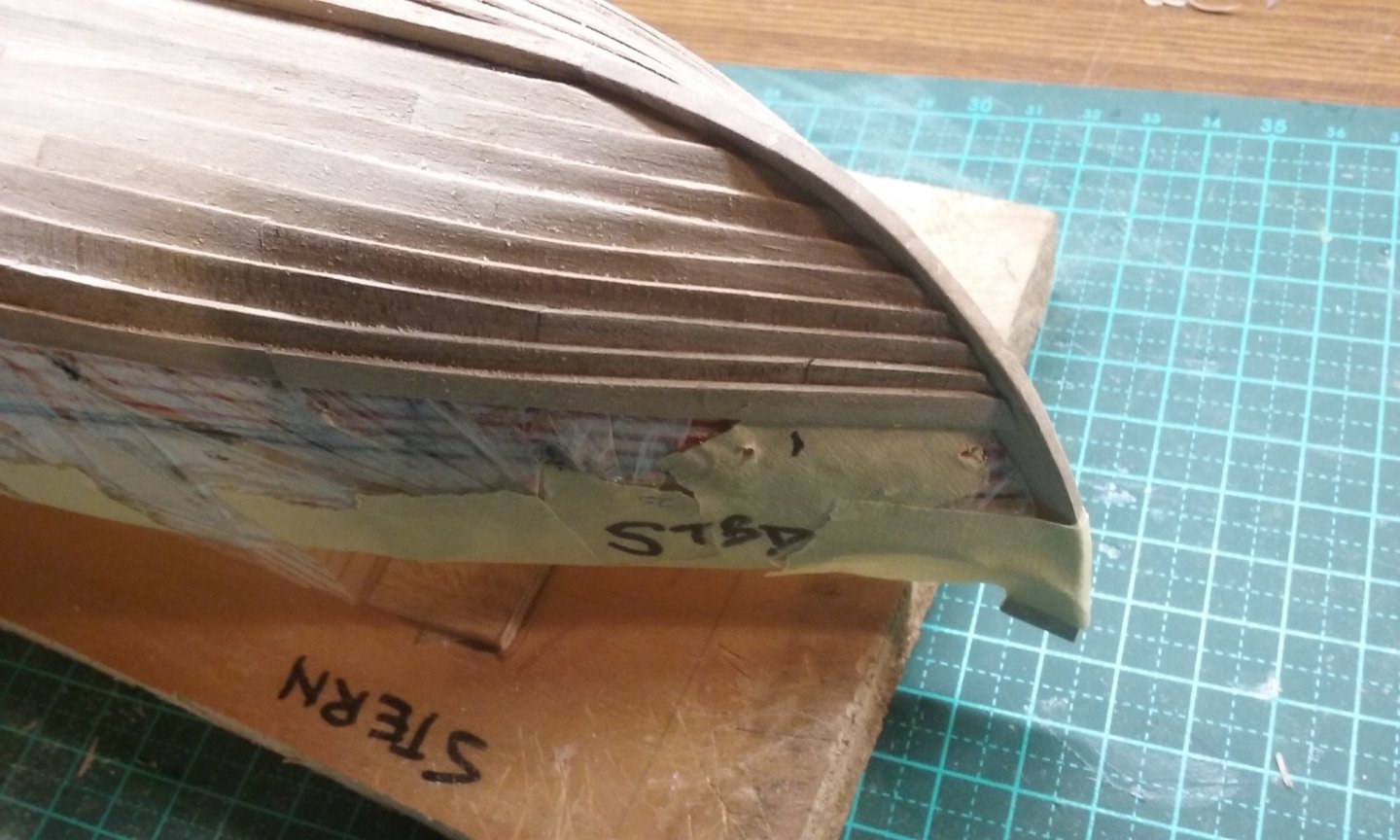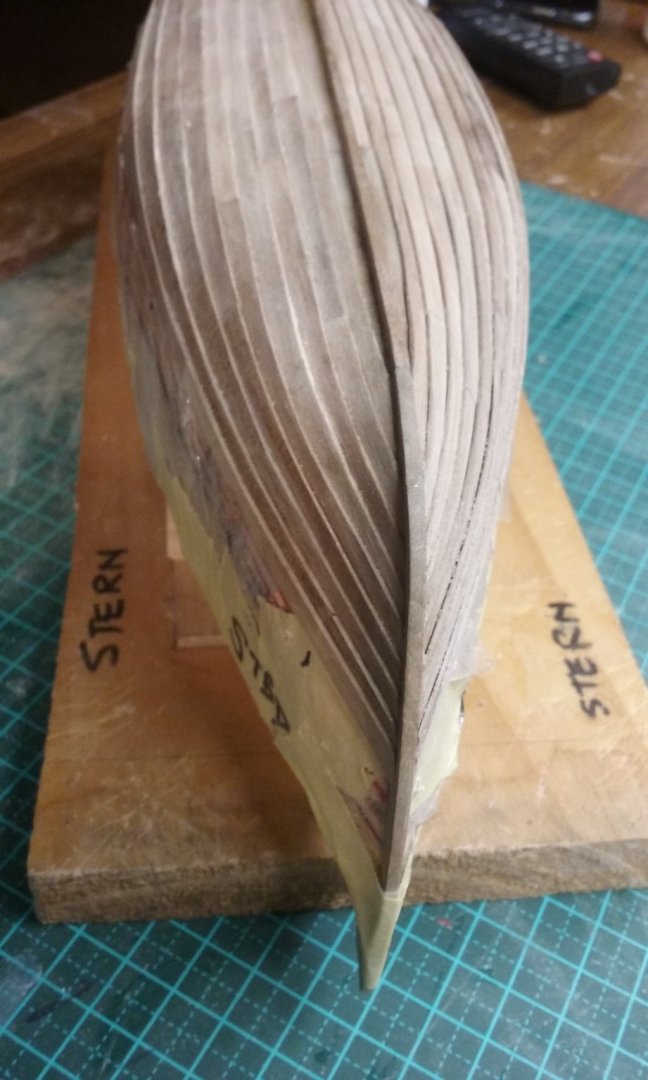-
Posts
7,567 -
Joined
-
Last visited
Content Type
Profiles
Forums
Gallery
Events
Everything posted by Louie da fly
-
No worries, Roger. Taken in the spirit it was offered, and your interest is appreciated. Steven
-
I'm wondering if it wouldn't be best for you to sand all the planks down at the bow cheeks to make a single smooth surface. Otherwise I can't see how that decal is going to stick. Whether you should also varnish it, I really don't know. Steven
- 62 replies
-
- amati
- greek bireme
-
(and 1 more)
Tagged with:
-
So long as it's stable, you should be fine. I've seen the results of ship models tipping over. Not to be thought of. Steven
-
Nice work, Dick. Beautifully detailed as usual. Steven
- 186 replies
-
- keelless
- reverse clinker
- (and 4 more)
-
Just checked the taper in the strakes. The visible part (i.e. not taking the overlap into account) goes from 5 millimetres amidships to 3 mm at the ends. So a taper of 2mm in 5 - not all that shabby after all. Steven
-
Thanks people for the likes. Roger, I know about these carved stem and sternposts. Not a problem, but I decided to do it a different way, as nefs are later and further south than Viking ships (there's one on a seal from as far south as Spain!) and could well have followed a different tradition of construction. Chuck, the planks do taper but perhaps not as much as they should, and the taper is not terribly obvious in the photos. Steven
-
Well, I can't speak for anybody else, but the base on my own galley (dromon) is wide enough so it doesn't tip over sideways but narrow enough for the oars to stick out either side. I think it looks better that way. Note that the base is made of a piece of marble, so it's VERY heavy, to keep it stable. Steven
-
Thanks everybody for the likes and i particular thanks Woodrat, Druxey and Bolin for the info on bow/sternpost planking. Well, I've reached something of a milestone - I seem to recall Druxey saying the hardest bit of planking is getting to the turn of the bilge. Which I have now done! I've found that I'm doing an average of one pair of strakes every two days. Here's a pair of end planks. I've been joining the planks in a strake with scarphs in the thickness of the plank. There's a lot of trial and error involved and quite a bit of adjustment needed to get the planks to fit properly and follow the line of the strake smoothly. Of course the upper side of the plank isn't as important as the upper, because it will be hidden by the next plank overlapping it. Sometimes it doesn't quite work at the ends and I have to put in slivers of wood to fill the gaps. And then trim them off smooth. So here's the sequence - progress photos as the planking gradually gets done. Some more gap filling needed here. I'll get onto it in due course. This end is rather better. I'm pretty happy with this. And the pattern of the planking is unexpectedly attractive. It's made me appreciate clinker construction a lot more. Steven
-

Ancient galley rams discovered - photos
Louie da fly replied to Louie da fly's topic in Nautical/Naval History
I've also seen a suggestion that ancient galleys didn't ram other vessels side-on, but on an angle from the stern. This makes sense if the opposing galley was travelling at speed - less likelihood of the ram being torn off by the collision. Unfortunately I've lost the reference. [Edit] I read a book a while ago called (I think) The Crescent and the Cross - The Battle of Lepanto. It basically described the battle as one of a single round of gunfire, followed by soldiers boarding opposing galleys and wiping out the crews in hand-to-hand combat. The galleasses, being much slower (though much more heavily armed), only figured in the battle at the very beginning after which they were left behind by the ebb and flow of the fighting. And the battle had very little effect on the overall situation - the Ottoman fleet had been completely replaced within a year. It was more of a propaganda victory than a strategic one. [/Edit] Steven -

Ancient galley rams discovered - photos
Louie da fly replied to Louie da fly's topic in Nautical/Naval History
Yes, much heavier and more powerful vessel than a galley, which was built as lightly as possible because it was moved by muscle-power. Steven -

Ancient galley rams discovered - photos
Louie da fly replied to Louie da fly's topic in Nautical/Naval History
Well worth getting if you're into that kind of thing. Very well and comprehensively researched, and as far as I'm concerned though it was published back in 2006 is still the definitive work on the subject. The discoveries at Yenikapi in Istanbul have made some of it out of date, but it's still the best book out there on dromons. Steven -
Thanks, mate. Is that first picture you posted from the wreck of the Lomellina at Villefranche? Steven
-

Chain Plates Gor 16th Century Spanish Galleons
Louie da fly replied to Bill Jackson's topic in Masting, rigging and sails
I've just added some more galleons to my Pinterest page, for those who are interested. https://www.pinterest.com.au/lowe1847/galleons/ Steven -
Merci beaucoup, GD. For the English-speakers; "The carlingots are two pieces placed against the keel, parallel to it, for lateral reinforcement. The aiguillettes are the top piece of the top part of the cavaliers (which on this ship have a particular form)". I'm not familiar with the term cavalier, but it seems to be a frame, and so I think the aiguillette must be the top futtock. Steven
-
Hi Sandra, What an amazing job to have! I envy you immensely. I have a smattering of French myself, which has helped me with archaeological reports. Speaking of which, have you any idea of what is meant by the terms aiguilette and carlingot ? (see text below from the report Le Navire Génois de Villefranche in Archaeonautica No. 9). The carlingot appears to be something to do with the carlingue (keelson) but I can't find a definition for it anywhere. Any help gratefully received. Steven
-

Chain Plates Gor 16th Century Spanish Galleons
Louie da fly replied to Bill Jackson's topic in Masting, rigging and sails
Thanks, Allan. I think there's a lot to learn from contemporary representations, and I thought it would be good to collect as many as possible in one place as an easily-accessed reference. Bill, just a quick question - when you ask about chain plates, do you mean metal plates or the flat wooden extensions to the hull which hold the shrouds, known as chain wales (channels)? Steven -

Chain Plates Gor 16th Century Spanish Galleons
Louie da fly replied to Bill Jackson's topic in Masting, rigging and sails
You might like to look at the collection I made of contemporary representations of galleons at https://www.pinterest.com.au/lowe1847/galleons/ - it might be helpful. Steven -
Beautiful work, Slog! I don't know how anybody manages to produce such magnificent work from card. Kudos, mate! Steven
- 243 replies
-
- borodino
- dom bumagi
-
(and 1 more)
Tagged with:
-
Sandra, you'll occasionally find that there are alternative translations between French and English, of which one is correct and the other isn't. For example the usual translation of the word pont into English is "bridge" - but the correct word for ships is "deck". The "bridge" is a different part of the ship entirely. Another one is bâtiment - the usual English translation is "building", but the maritime one is just "ship." There are quite a few words like this, but as you get into the subject it gets easier. Steven
-
Antony, I really regret never having taken photos of Great Harry (Henry Grace a Dieu) when she was in her original glory. I had all the masts in, all the sails, all the planking, the decks, almost everything except the rigging. It would be nice to compare that with the way she is now. Your photos are pretty amazing. It'll be interesting to see how the new one turns out and following on as she progresses. There is certainly some amazing work on MSW, but it caters for everybody from the rawest newbie to the demi-gods of ship modelling, who write text books on the subject. You'll find the people here very supportive and helpful no matter what level a person is. In my view this is the best forum on the Net. Steven
-
Welcome to MSW, John. That Armed Virginia Sloop is a beautiful model. You've done a lovely job. You're not alone in making mistakes - we all do it - but as you say they are very often a learning opportunity, and fortunately wood is a very forgiving medium. Good to hear you'll be making a build Log for your Rattlesnake, but in the meantime if you want to start one your Fair American - particularly if you have photos to enable you to do a retrospective log - I'm sure we'd all be very interested. Good to have you aboard, mate! Steven
About us
Modelshipworld - Advancing Ship Modeling through Research
SSL Secured
Your security is important for us so this Website is SSL-Secured
NRG Mailing Address
Nautical Research Guild
237 South Lincoln Street
Westmont IL, 60559-1917
Model Ship World ® and the MSW logo are Registered Trademarks, and belong to the Nautical Research Guild (United States Patent and Trademark Office: No. 6,929,264 & No. 6,929,274, registered Dec. 20, 2022)
Helpful Links
About the NRG
If you enjoy building ship models that are historically accurate as well as beautiful, then The Nautical Research Guild (NRG) is just right for you.
The Guild is a non-profit educational organization whose mission is to “Advance Ship Modeling Through Research”. We provide support to our members in their efforts to raise the quality of their model ships.
The Nautical Research Guild has published our world-renowned quarterly magazine, The Nautical Research Journal, since 1955. The pages of the Journal are full of articles by accomplished ship modelers who show you how they create those exquisite details on their models, and by maritime historians who show you the correct details to build. The Journal is available in both print and digital editions. Go to the NRG web site (www.thenrg.org) to download a complimentary digital copy of the Journal. The NRG also publishes plan sets, books and compilations of back issues of the Journal and the former Ships in Scale and Model Ship Builder magazines.




